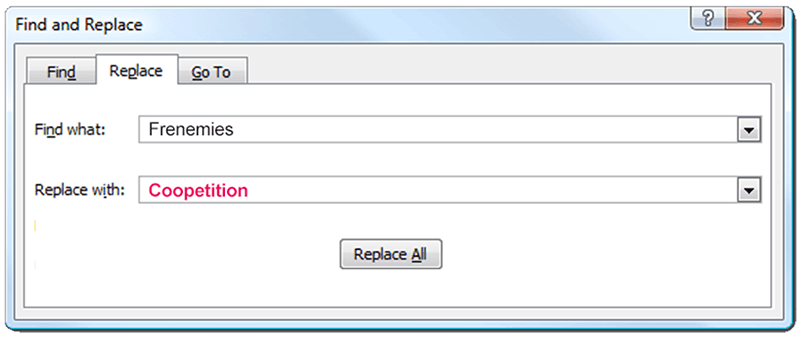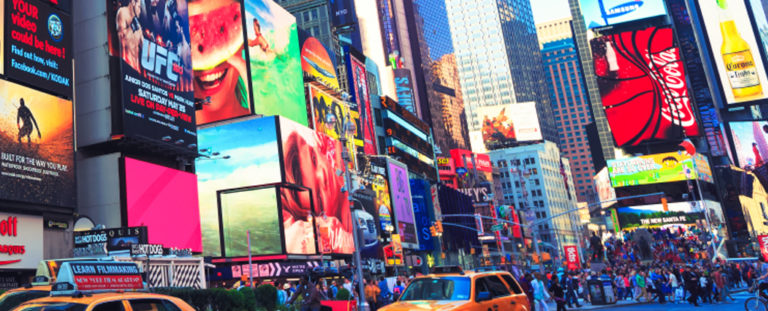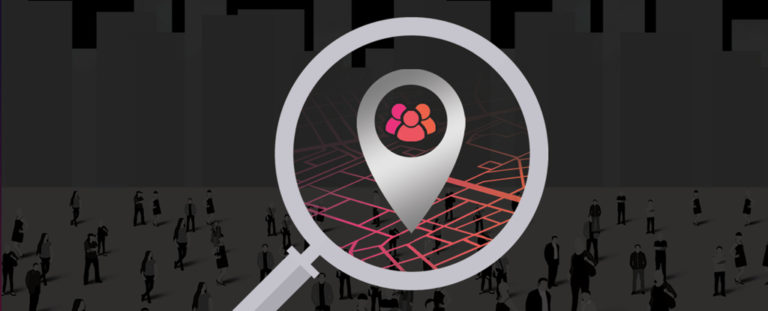Coopetition – a modern-day recipe for success
Published: January 28, 2019
I want to start by saying that I despise the term “frenemies.” Of all the ways to mash up two concepts, this word is so poorly executed. It combines just two letters of the word friend with seven letters and the full word of enemies. It’s like giving a two-finger handshake to a new potential partner you just met. Unless you want to convey to someone that they are a little bit a friend and a lot a bit an enemy, for most people, frenemies doesn’t make sense.
Instead, I prefer the term “coopetition.” It balances the concepts better and just feels more natural.
So for the record, I propose that we abolish the term frenemies and replace it with coopetition.

Coopetition has been something on my mind since the early days of launching Adomni. We quickly realized that Adomni entered an industry with a long history of fierce competition; where a zero-sum mentality dominated for so many years.
And I get it. In so many cases, advertisers had to choose between similar out-of-home advertising products in similar locations; and the OOH sellers were using similar sales tactics while pursuing similar buyers. When Lamar won a contract, Clear Channel would lament that it lost the deal. The OOH sales environment of the past fostered a winner or loser outcome.
While this old way of thinking and operating is still very much present today, it is my belief that it’s already begun to fade. Ask yourself this - how much longer will the current OOH RFP process continue? As a media owner or an agency, the amount of friction involved in an RFP process is unbelievable. The manual steps to gather the necessary information; filling out online forms or spreadsheets; and waiting/hoping to be the lucky participant in a media buy. And those are just the beginning of the process! To me, this is just one example of an operating model from the past.
The world has changed. Coopetition has emerged, and I believe that the OOH companies who embrace the notion of inclusive growth are the ones that will thrive. The best companies have already realized this and are doing something about it.
Before diving into OOH coopetition, here are some great examples outside of the OOH world that you can probably relate to:

- Netflix (OTT/cord-cutting) shows are now natively available to stream over cord-connected digital Cox cable boxes.
- Samsung TVs are now being bundled with Apple iTunes software, despite the fact that both companies have been engaged in a seemingly endless legal battle (estimates are in the tens of millions of dollars in legal fees for each side).
- Apple openly supports the availability and distribution of iOS apps from its uber-competitor in mobile phones, Google, and desktop/laptop computers, Microsoft.
In all three cases, by cooperating there is a mutually beneficial outcome for all of the mega-competitors. One side gets additional distribution of their content in a platform where people are already spending a lot of their time. The other reaps the benefit of keeping the consumer in their ecosystem, even if 100 percent of the time is not spent on their programming or applications. The consumer wins by having a convenient place to find all of their preferred content or applications. All sides get to participate in the experience.
What Netflix, Cox, Google, Apple, Microsoft and many others have realized is that to maximize success, they need to both cooperate and compete. It is more important to them to have their products and services everywhere, versus just within the platforms they own and control.
The world of out-of-home advertising is beginning to embrace the coopetition concept.
A couple of standout examples of OOH coopetition in 2018 (and increasingly so in 2019):
Media Owners Embracing Programmatic Selling
Similar to the tech titans above, OOH media owners (aka publishers), from JC Decaux to Lamar to Clear Channel to Adspace to ChiveTV, have demonstrated a deep commitment to listing their inventory in platforms that aren’t their own and selling unsold ad space programmatically. By investing millions of dollars in new automation software using freshly built APIs, they are broadcasting inventory in a controlled way and making ads available to purchase programmatically.
They accomplish this via their own custom software systems and/or leveraging third-party software provided by supply side platforms (SSPs) and exchanges, such as Broadsign Reach, VIOOH, PlaceExchange and Apparatix. And it isn’t just the big guys that are embracing programmatic. Premier Outdoor Media and Jones Signs are examples of two independent billboard operators who also jumped in to the programmatic waters in 2018.
In these cases, the base ingredients of an open, connected marketplace are starting to crystalize. SSPs
are aggregating the inventory for DSPs like Adomni, Hivestack and Vistar to connect and bring new buying audiences to fill unsold space. Coopetition is in motion.
Software Companies Integrating
It has been important to me and Adomni to embrace coopetition early on, recognizing that hyper-growth comes from partnership. Sometimes, the partner is another software company and is, in some respects, a direct competitor. Recently, we announced that the Adomni DSP is fully integrated with Broadsign’s SSP. Yes, technically both companies offer a CMS and media player solution, but the interests of Broadsign’s publishers and Adomni’s advertisers came first. Making Broadsign-controlled ad inventory available to more DOOH buyers superseded the fact that both companies have overlapping product offerings.
What does all of this coopetition mean for us in OOH? You will see a lot more coopetition in 2019, and in the years to come. Companies that, in the past, would never work together will re-think and change their position. All for the greater good.
It sums up nicely in this old English proverb:
Many hands make light work.
To get the latest updates on out of home advertising, digital marketing and technology, follow us on:
Or sign up for our newsletter.


